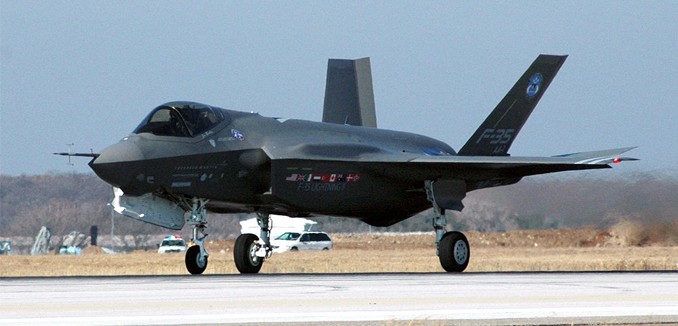Israel Aerospace Industries has signed a multi-billion dollar contract to assist in constructing America’s new F-35 Mark 2 stealth fighter. The company will provide the wings:
Israel Aerospace Industries will build wings for the F-35 Lightning II stealth combat jet, which Lockheed Martin Corporation will begin producing in 2015. The 10-15 year contract has a potential value of $2.5 billion. IAI and Lockheed Martin have begun setting up the production line for the F-35’s wings at an IAI facility. IAI will invest in state-of-the-art technologies and systems needed for the project.
Analysts and diplomats routinely cite U.S.-Israeli security cooperation as a critical component of the bilateral relationship between the two countries. Last year President Barack Obama signed the United States-Israel Enhanced Security Cooperation Act, with the President declaring that he had “made it a top priority for my administration to deepen cooperation with Israel across the whole spectrum of security issues – intelligence, military, technology.”
Israeli military advances have proven critical to U.S. military innovation. Close cooperation enables the U.S. to leverage “unique Israeli capabilities in key ‘niche’ areas of military technology.” Israeli innovation was fundamental to the development of the U.S. drone program, which Defense Department officials describe as the single most significant transformation in how American troops fight wars.
Israel’s Iron Dome missile defense technology will likely be deployed in support of U.S. ground units in places like Afghanistan. U.S. allies such as South Korea and Singapore are also reportedly interested in the technology.
Israel’s air force is in the midst of a technological revolution that may similarly prove crucial to boosting American war-fighting capabilities:
The Israel Air Force is in the middle of a technological revolution that is creating a digital network in the skies, a senior IAF source told The Jerusalem Post on Monday… In the past, IAF aircraft dropped munitions on targets and returned to their bases, relying on radio communications and traditional sensors. Today, however, the jets and helicopters exchange data with a host of sources, from other aircraft flying with them, to ground forces, the Navy and intelligence services, and all in real time.
“We can communicate directly with other platforms… This acts as a force multiplier,” the source said. “Plane A can tell Plane B what it is seeing in flight, and report all of this back [to IAF headquarters or airbases],” he added. “It’s like a pack of leopards on a hunt. They work together in a network, not as individuals.”
Israel relies on the IAF as its primary response force to national security threats.
Photo: U.S. Navy photo by Mass Communication Specialist 2nd Class D. Keith Simmons / Wiki Commons]




